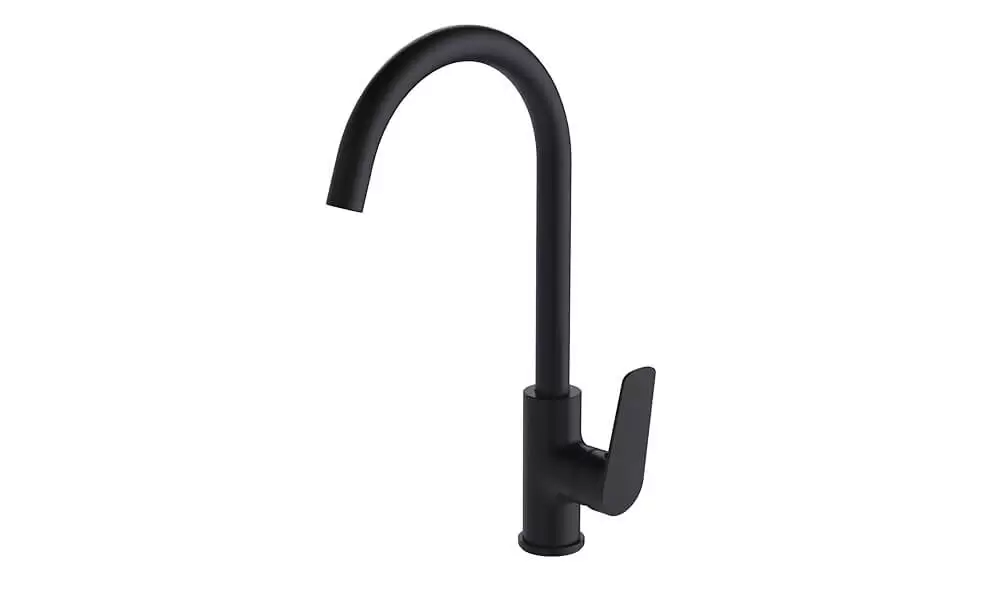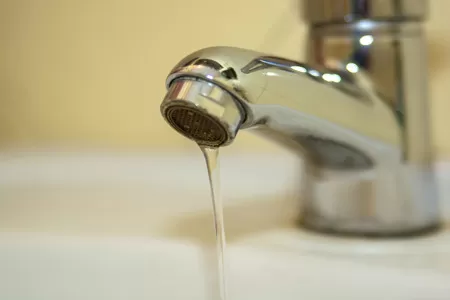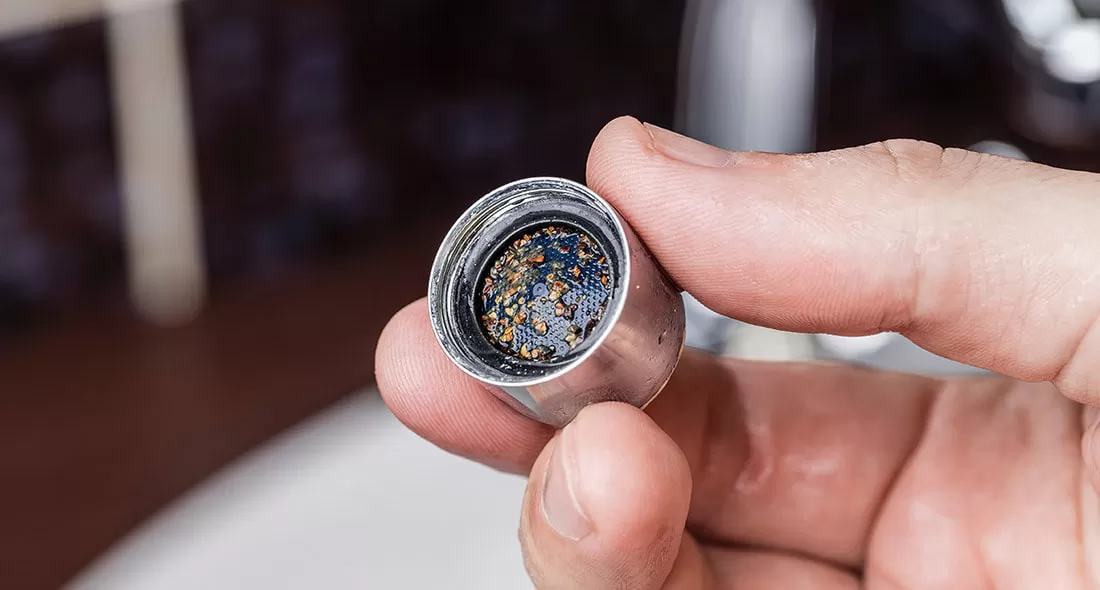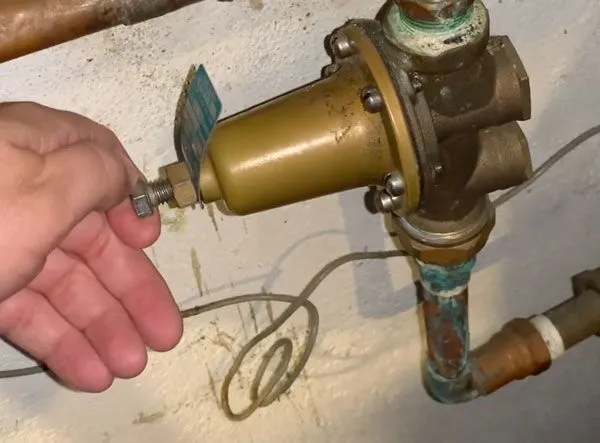
What should you do if your water pressure in kitchen faucet is low? This is a common problem in the kitchen that can often make daily activities such as cooking and washing dishes difficult and frustrating. Fortunately, this problem is actually very common, and most of the causes can be solved with simple repairs without having to spend money to hire a professional plumber! In this article, we will discuss in detail 10 common causes of water pressure in kitchen faucet is low, and provide you with how to fix low water pressure in kitchen faucet, so that you can quickly restore normal water pressure.

The aerator is an important part of the kitchen faucet. It is located at the outlet of the faucet. Its function is to divide the water flow into multiple streams and mix air through the Venturi effect, reducing the water flow and ensuring that the water flow is stable and uniform without compromising the strength of the water pressure. However, as the use time increases, the minerals and impurities in the water may precipitate and accumulate in the aerator, causing it to clog, thereby reducing the water flow and water pressure. Therefore, when you find that my kitchen faucet has low water pressure, the most likely reason is it.
Step one: Turn off the water source and use a non-slip wrench to turn counter-clockwise to remove the aerator
Step two: Soak it in a 5% acetic acid solution for 15-30 minutes. If you use warm water around 50°C, the cleaning speed will be faster
Step three: Use a brush to clean the aerator again
Step four: Refit the aerator and turn on the water supply.
If this solves the problem, congratulations! Your kitchen faucet water pressure low problem is solved.

The faucet cartridge is the core component of the faucet, known as the "heart" of the faucet. It controls the switch of water flow and adjusts the amount of water flow. If they are clogged by dirt, minerals, or sediment, the water flow will be restricted, so this may be the second major reason for your water pressure in kitchen faucet is low.
Step one: Turn off the water source and use tools such as a screwdriver or Allen wrench to remove the faucet and faucet handle.
Step two: Remove the clamp that fixes the cartridge and take out the cartridge.
Step three: Carefully check the condition of the faucet cartridge, soak the cartridge with vinegar, and clean it with a brush. If the cartridge is damaged, it is recommended to replace it with a new cartridge of the same model.
Step four: Reinstall the cartridge into the faucet, restore the faucet installation, and turn on the water source to check.
With these simple steps, your low-pressure kitchen faucet problem should be restored to normal.
Any blockage in the water supply line will directly affect the flow of water, resulting in low faucet water pressure. Common sources of blockage include mineral accumulation, sediment, or garbage. These blockages will reduce the cross-sectional area of the pipe, thereby restricting the water flow, and causing the water pressure in kitchen faucet is low.
Step one: Turn off the main water supply to the kitchen faucet
Step two: Disassemble and disconnect the water supply line of the sink to expose the blocked part.
Step three: Clear the blockage. You can try different methods and tools such as hot water, chemical unclogging agents, and pipe unclogging.
Step four: Reinstall the water pipe and turn on the water supply.
If you have old metal water pipes (such as galvanized steel pipes) in your home, these pipes will age and corrode over time. Scale and rust will gradually form on the inner wall of the pipes. These substances will continue to accumulate, causing the inner diameter of the pipe to become smaller or increasing the resistance of the water flow, thereby causing the water pressure to drop. Some old water pipes are seriously corroded and leak, which will cause part of the water flow to flow out and fail to reach the user's water point, resulting in a drop in water pressure. Therefore, aging or corrosion of the pipe network is also a major reason for the water pressure in kitchen faucet is low. The most direct and effective way to solve the problem of low water pressure caused by aging or corroded water pipes is to replace new pipes.
Step one: Turn off the water source and prepare tools.
Use a wrench or other suitable tools to remove the old pipes.
Step three: Connect the new pipes to the faucet and water supply pipes, ensuring that the connection is tight and fixed reliably.
Step four: Open the water valve and check that there are no leaks in the water pipes and that the water pressure is normal.
If your home has a pressure-reducing valve (PRV), it regulates and controls water pressure throughout the house to ensure safe and comfortable levels. A damaged or malfunctioning PRV may restrict water pressure to the kitchen faucet, causing low water pressure and affecting normal use.
Step one: Turn off the main water supply to prevent water spraying during repairs.
Step two: Check the PRV for visible leaks, damage, or irregular operation.
Step three: Install a pressure gauge on another faucet. Turn on the faucet and measure the pressure. If the reading stays between 40-80 psi, the PRV is working. If it’s below this range, gently turn the screw on top of the PRV counterclockwise (about 1/4 turn each time) and monitor pressure changes.
Step four: Once fixed, reopen the main water supply.
Tip: If unsure about adjusting the PRV or encountering issues, contact a professional to avoid further damage.

Some faucet designs may affect water flow. This is especially true for faucets that are designed to save water. They may limit the water flow. As a result, the water pressure in kitchen faucet is low.
Check the model and flow design of your faucet. If your faucet is not suitable for low water pressure, consider replacing it with a faucet designed for low water pressure. For example, you can choose pull out kitchen taps for low pressure.
If you only experience low water pressure when using hot water, there is likely a problem with the water heater. This is because when the water temperature exceeds 60°C, the minerals in hard water will precipitate more quickly. According to research by the American Society of Plumbing Engineers (ASPE), a 1mm layer of deposit can reduce thermal efficiency by 12% and reduce water output by 25%. Therefore, the accumulation of deposits inside the water heater will also affect the water pressure of the kitchen faucet.
Step one: Turn off the power supply and the inlet and outlet water valves of the water heater, and drain the water.
Step two: Use a mild detergent (such as a 5% citric acid solution) to help clean and remove the deposits, especially the deposits around the heating elements.
Step three: Close the drain valve, open the inlet water valve, and refill the water heater with water.
Step four: Turn on the power supply and restart the water heater.
The piping system design is crucial for ensuring efficient water flow in a home’s water system. If the design is not reasonable, it can increase water resistance, cause uneven water pressure, and disrupt the water flow direction. This can eventually lead to water pressure in kitchen faucet is low.
If this is the cause, fixing it may be complicated and costly. The only way to improve water flow efficiency is to redesign and modify the faulty piping system. It is recommended to hire a professional plumber to handle this, as improper modifications could lead to even bigger issues.
If the kitchen’s water supply valve is not fully open or is partially closed, the flow area through the valve decreases. This slows down the water flow and lowers the pressure. This effect is especially noticeable during low-flow periods. For example, after repairing the kitchen faucet, I found that the valve was not fully opened when I turned it back on. This caused a significant drop in water pressure in my kitchen faucet. So, a partially closed valve is also one of the reasons why my kitchen faucet has low water pressure.
Check all related valves and make sure they are fully open. If you find any valve partially closed, simply adjust it to the fully ope
If you’ve ruled out all common household causes but still face weak flow at the kitchen sink, the root issue might lie beyond your property lines. Growing urban populations strain water systems, and customers at the far ends of distribution networks often suffer pressure drops during peak hours – exactly why your kitchen faucet has low water pressure despite a functional home plumbing system.
Check with neighbors to confirm if they’re experiencing similar issues with low water pressure in kitchen faucets.
If multiple households are affected, document specific times when pressure decreases.
Contact your municipal water provider with collective observations.
Most Water Pressure In Kitchen Faucet Is Low problem responds to basic maintenance. You don't need to hire a plumber, many problems can be solved with simple DIY methods. If you've been troubled by the water pressure in kitchen faucet is low, remember: regularly cleaning the bubbler, checking the pipes, and choosing faucets that are suitable for low water pressure environments can help you easily restore water flow.
If your home has more complicated problems with pipes, water heaters, etc., or you are not sure how to operate them, you can always ask for help from a professional or Contact Our Experts. Address low water pressure in kitchen faucet problems promptly to maintain kitchen efficiency and avoid long-term appliance strain.